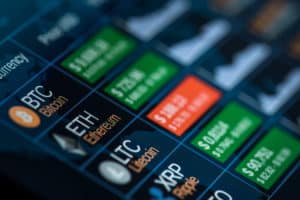 For an industry that is usually slow in adopting new technology, the emergence of decentralised finance (DeFi)/blockchain/crypto/tokenisation/metaverse is a theme that cannot be ignored as it will deeply transform the financial markets. There are already initiatives utilising Blockchain on repo and FX trades. We are also seeing digital new issues being brought to market.
For an industry that is usually slow in adopting new technology, the emergence of decentralised finance (DeFi)/blockchain/crypto/tokenisation/metaverse is a theme that cannot be ignored as it will deeply transform the financial markets. There are already initiatives utilising Blockchain on repo and FX trades. We are also seeing digital new issues being brought to market.
As other industries including fashion, sports and media are quickly adopting tokenisation and non-fungible tokens (NFTs), I see the finance industry having no choice but to follow suit. Likely changes will include asset managers tokenising their funds to allow for easy access to a far wider client base and banks increasingly using blockchain to collapse costs and provide a far quicker settlement cycle – from days to minutes. DeFi is one theme that cannot be ignored, the other is mass adoption of these technologies by clients, which banks and asset managers must embrace to still be relevant to their clients. When we look back we will recognise this time was the start of the tsunami. The DeFi trend will only increase into 2022 and beyond.
– Carl James, head of fixed income trading at Pictet Asset Management
In 2022, we expect to see more asset classes evolve into digitised forms, which will create opportunities for firms like DTCC to support market transformation by creating the infrastructure to enable their safe and efficient processing. Market infrastructures are best placed to mitigate the operational and counterparty risks related to digital assets by establishing governance models and standardised post-trade processes, which will be critical to developing deep, liquid and efficient markets and promoting greater investor and regulatory confidence.
– Michael C. Bodson, president and chief executive officer, DTCC
As more users and markets embrace Web 3.0 thinking, digital assets will merge with traditional forms of finance to redefine value chains and financial markets. Money and value will be unlocked, made more useful, and will move more efficiently. Issuers already see the benefits of a distributed architecture and decentralised protocols for raising capital. Next up will be an overwhelming demand for institutional grade and regulatory-compliant infrastructure and tools to engage with this new market for value. The regulatory landscape will become clearer and will pave the way for further innovation, as we saw from the recent report by the BIS into the decentralised finance (DeFi) space. The opportunities for DeFi in pre-trade and post trade will create an explosion of new use cases, much more reflective to demand and investment beyond crypto.
– David Nicol, co-founder and CEO of LedgerEdgeAs centralised crypto-intermediaries (CeFi) and decentralised finance projects (DeFi) proliferate, these venues will gravitate toward governance structures and compliance programs long used by traditional financial markets as regulators determine how to regulate these markets. For example, in 2020, the Financial Conduct Authority (FCA) required crypto asset firms to comply with anti-money laundering (AML) regulations through registration, which has fast become a global trend. In the US, there are similar concerns about the status of individual crypto products and how market participants can offer them to the market.
Further, SEC Chair Gary Gensler raised concerns about information barriers between investors and those funding innovative DeFi projects. The latter will drive the need for DeFi to eventually exist within a regulatory framework. All parties involved are engaged in spirited discussions about whether existing frameworks suffice, or whether regulators should consider new, fit-for-purpose frameworks. We increasingly see venues and market participants employing more mature compliance programs and surveillance techniques to stay ahead of regulatory requirements. Particularly for know your client (KYC), AML, transaction monitoring and trade surveillance, we expect that both CeFi and DeFi market participants will adopt best-of-breed compliance tools in a manner that brings the lessons of traditional control frameworks into the future.
– David Griffiths, director of regulatory affairs at Eventus
Digital asset interoperability and time to market remain a challenge, with traditional and multiple types of blockchain-enabled digital asset infrastructure being severely fragmented. We will increasingly see the introduction of solutions and services that bridge the gap between traditional and digital capital markets, whilst effectively mapping to evolving regulatory frameworks to enable mass adoption by institutional players. To address this, centralised finance (CeFi) and decentralised finance (DeFi) will intersect within a regulated environment and support the convergence of traditional and digital asset activity.
Centralised and decentralised technology enabled businesses will cohesively coexist by way of hybrid solutions, both traditional and digital, as buy-side institutions, banks, brokers, exchanges and other capital players increasingly adopt digital assets as part of their digital transformation agenda. To support this, financial market infrastructure and digital asset infrastructure will become interoperable. One such example will be the centralized exchange and decentralized exchange combining, so that we increasingly see a type of hybrid exchange. And the evolution of the hybrid digital market infrastructure delivering Hybrid Finance – HyFi!
– Hirander Misra, CEO, GMEX Group